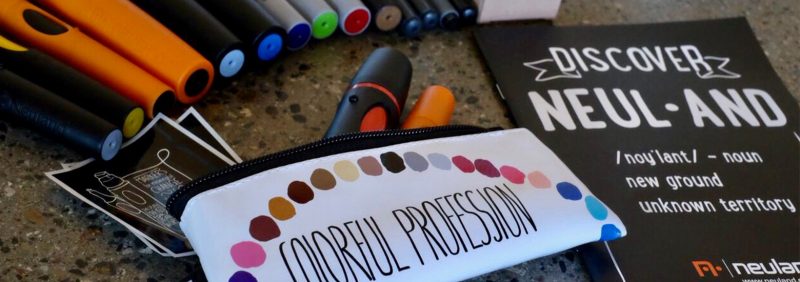
How to Get Started as a Graphic Recorder
It’s time for a Frequently Asked Questions! Summer roundup of questions I’ve been asked from folks new to the field lately:
I’m new. How do get started as a graphic recorder?

I love this question Welcome, fellow visual thinker!
Six opinionated ideas and highly subjective advice:
- Start. I want you to START drawing! I am not a believer in just “following your passion”. I think you should be inspired to be creative, yes, and make sure you put the work in to get good at things. Don’t leap into your passion and then give up too soon, especially when it gets hard. I don’t wait for creativity to land in my lap. I have to make stuff, and see where it goes. And then, once you make something you have to share it. How will people know what you want to do, otherwise?
- Your first projects should personally interest you. Be proud to share them. Deliberately choose to work for trusted people for a few low-stakes projects. Build your confidence.
- Find a mentor. This field enables people to bring their professional experience (coaching, facilitating, leading) and apply it to visual work. Like many creative professions with a majority of sole practitioners, the foundation based on apprenticeships, networks, and learning from peers. It’s rapidly growing and I think mentors help us see how collectively as practitioners we can help organizations, clients, individuals.
- Take a workshop. Research. Read books. Set up a Skype call. Go to a meetup. Ask your mentor if you can watch them work at a public or appropriate event. Go to a conference. Try to read forums before asking a 12,000 person Facebook group “what is the best pen to use?” And, take a graphic facilitation workshop to find like-minded people and start building your community.
- Think about how you want to start a business. There’s no one right way. Maybe you’ll have a business partner, maybe you’ll have an unusual niche. Look to other creative fields for the business model that works for you. At minimum, you should clearly show people what you want to be hired for. No sense putting a link to your tattoo website up if you want to be hired to sketchnote.
- Be generous. If you’re asking for people’s time, effort, emotional labour from others: ask them/see how you can help them in a reciprocal way.
Favorite markers?
 I’m a Neuland ambassador. I love that they’re refillable, non-toxic, and come in vibrant colours and tips, especially the Big Ones. I am a huge, huge fan. Let’s talk markers anytime, and I’ll show you how these ones are designed to not even roll off the table.
I’m a Neuland ambassador. I love that they’re refillable, non-toxic, and come in vibrant colours and tips, especially the Big Ones. I am a huge, huge fan. Let’s talk markers anytime, and I’ll show you how these ones are designed to not even roll off the table.
What’s are most important skills a graphic facilitator needs to have?
We are doing more than drawing – we are facilitating and leading, and helping others see their own thoughts. This month I might say: Listening and decision-making about what marks to make; awareness and skills to work on bias; empathy and a strong sense of personal leadership.
Last year I might have said patience, an ability to be reflective, a curiosity about learning (you can’t just draw what you think is happening). This is one of those “one finger pointing out, three fingers pointing back” types of questions.
What you notice or appreciate in others is also something you’re noticing in yourself, of course.
How is this a job? Why haven’t I heard about it?
RIGHT? Pretty amazing job! Graphic facilitators are becoming more popular – so you may see them more now. But the field began in the 1970s, so it also has a long history, practices, and its own methods. Some folks work inside organizations, and some practitioners are consultants.
Do you pre-plan your layouts?
No, and yes. I start with a blank page for graphic recording and most facilitation now. When I’m doing live work I am deciding as we go: I am matching the type of structure to the format of the meeting. Open plenary dialogue looks different than rapid-fire report outs, or a strategic plan deciding “three action steps”. These are emergent and not planned ahead of time, because facilitation and scribing is (or can be) emergent.
And when I facilitate meetings, I do pre-plan things in templates – when the group needs to see the structure in a specific way. If we need to do a “what are three next steps” for strategic planning meetings, or using a metaphor to help the group orient themselves over time – structure helps.
New graphic recorders should definitely practice planning sketches and layouts for live graphic recording and beyond. Have a mini sketchbook of layouts that you can turn to when you’re under drawing pressure – I have to mix it up, otherwise all panel presentations look the same (yawn).

You travel a lot. What’s the best place you’ve been?
This is a fun question, because in North America a lot of graphic facilitators are consultants who travel widely – it’s not required, but I love it. (I also follow the rules – I have a visa to work in the US and Canada.) All countries and projects have their unique joys. It’s more about the people than a particular location. I’d rather be with kind people in northern BC than a fancy hotel where no one is using what I’m contributing. But since you asked, there was a project in Tanzania where I was working in a tent in the tropical heat …with a security guard whose job it was to prevent the baboons from climbing on the tables! Work has brought me to 10 countries and remote locations, and I’m noticing more and more – globally and locally we are all working on such similar problems: communication, belonging/connection, displacement, and climate. The world definitely needs more ways of communicating with other in empathetic ways – and I think visuals are one way to do that.
Do I need to be a good artist to learn to do what you do?
I think about graphic recording/facilitation like writing. Mostly, we don’t take a 2-day course and then suddenly create the Pulitzer Prize winning novel (and if you did, congratulations and then that novel was in you the whole time, no matter who your teacher was!).
I believe writing is a practice, a craft, and maybe also a calling; we all need writing skills even if we don’t become novelists. It’s the same as drawing – if you’re using drawing to communicate, or to help people think through ideas – it doesn’t need to be so fancy. It just needs to get onto the page.
This way, graphic facilitation and graphic recording are part of your toolbox.
… What other questions do you have, fellow visual thinker? Post your other favourite questions in the comments and I’ll do a Round 2 later on.
Learn more at our workshop
2020 October workshop with early bird pricing on now.